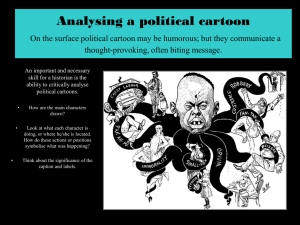World War One Study Guide - Great Valley School District
advertisement
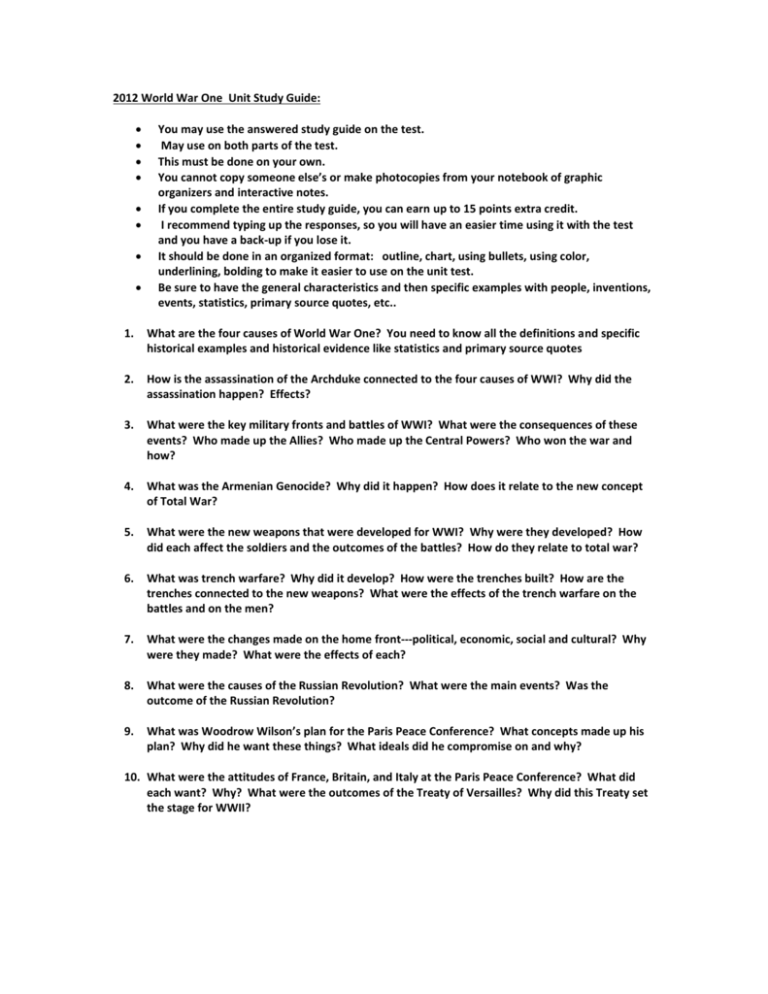
2012 World War One Unit Study Guide: You may use the answered study guide on the test. May use on both parts of the test. This must be done on your own. You cannot copy someone else’s or make photocopies from your notebook of graphic organizers and interactive notes. If you complete the entire study guide, you can earn up to 15 points extra credit. I recommend typing up the responses, so you will have an easier time using it with the test and you have a back-up if you lose it. It should be done in an organized format: outline, chart, using bullets, using color, underlining, bolding to make it easier to use on the unit test. Be sure to have the general characteristics and then specific examples with people, inventions, events, statistics, primary source quotes, etc.. 1. What are the four causes of World War One? You need to know all the definitions and specific historical examples and historical evidence like statistics and primary source quotes 2. How is the assassination of the Archduke connected to the four causes of WWI? Why did the assassination happen? Effects? 3. What were the key military fronts and battles of WWI? What were the consequences of these events? Who made up the Allies? Who made up the Central Powers? Who won the war and how? 4. What was the Armenian Genocide? Why did it happen? How does it relate to the new concept of Total War? 5. What were the new weapons that were developed for WWI? Why were they developed? How did each affect the soldiers and the outcomes of the battles? How do they relate to total war? 6. What was trench warfare? Why did it develop? How were the trenches built? How are the trenches connected to the new weapons? What were the effects of the trench warfare on the battles and on the men? 7. What were the changes made on the home front---political, economic, social and cultural? Why were they made? What were the effects of each? 8. What were the causes of the Russian Revolution? What were the main events? Was the outcome of the Russian Revolution? 9. What was Woodrow Wilson’s plan for the Paris Peace Conference? What concepts made up his plan? Why did he want these things? What ideals did he compromise on and why? 10. What were the attitudes of France, Britain, and Italy at the Paris Peace Conference? What did each want? Why? What were the outcomes of the Treaty of Versailles? Why did this Treaty set the stage for WWII? Possible Short Answer/Essay Questions: 11. Some historians believe that World War One was inevitable (destined to happen or unavoidable) because of the causes of World War One had been building since the Franco-Prussian War. Be able to examine in depth the four causes of World War One as they began historically and escalated with historical examples and evidence like primary source quotes, statistics, etc… 12. Historians identify World War One as the first modern war. This is due to a number of factors like the embracing of the total war, the new mass destruction weapons, the willingness to sacrifice millions of lives for little land gain, having war target civilians in their attacks, and the amount of control exerted by the governments on the home front to put everything into the war. Be able to examine in depth the above concepts with historical examples and evidence like primary source quotes, statistics, etc… 13. Historians attribute the mishandling of the Paris Peace Conference and the Treaty of Versailles as a main cause of World War Two. This is due to the conflicting interests and goals of the major powers, not allowing the Germans to attend and be part of the negotiations, and what was deemed as unfair and too severe the demands of the Treaty of Versailles on Germany. Be able to examine in depth the above concepts with historical examples and evidence like primary source quotes, statistics, etc… World War One Unit Extra Credit Options: a) The student may create a Metaphorical Representation on the causes of World War One. Worth up to 30 Points. __________1. The student completed the following statement: “The situation created in Europe due to the causes of World War One was like:” o a gang fight between the Bloods and the Crips over who was most lethal and territory in East LA. o …toddlers fighting over a toy in the sandbox. o …a catfight between two high school girls over the star of the basketball team. o …the school rivalry between Great Valley and Downingtown over who has the best soccer team. o …two GV high school students fighting over the last parking space in the student lot. o …overtime in a tied-basketball game, and it all came down to the last final free throw. o …a campfire that was left unattended and flamed out of control causing a forest fire. o …the mad scramble at David’s Bridals when they are having their blow-out sale on their most expensive gowns. o …the cut-throat competitiveness between the teenage girls competing for the America’s Top Model contract. o ...come up with an original metaphor for bonus points. __________2. Then under the chosen statement, illustrate a scene that supports the analogy. o You must incorporate specific historical information into the drawing. This means using historical images of key people, beliefs, and ideas on the causes of World War One. o You must incorporate specific historical terms and words into the drawing as well of historical images of key people, beliefs, and ideas on the causes of World War One. o You must address all FOUR causes of World War One within your Metaphorical Representation. o It may be hand-drawn or generated on the computer. o Do this in color and on a blank piece of paper. ___________3. On the back of your metaphorical representation: o You must provide TWO typed well-developed paragraphs explaining the metaphor and how it represents the cause and effect relationship on how the four causes led to World War One breaking out. o A well-developed paragraph consists of a minimum of four compound sentences. o You must provide analysis of the supportive illustration as well. o Do not just list or refer casually to the historical information in the illustration, but explain how each helped to create the warlike environment that brought on World War One. ____________4. The assignment was neat, done in color, the paragraphs were typed, spell-checked, and grammar-checked. The assignment reflected good effort by utilizing many historical concepts and multiple sources. b) The student may create an A – Z Review for World War One. Worth up to 50 Points. c) Do all the letters. For X and Z, if you cannot think of one, then do two for another two letters. Each must be THREE well-developed sentences containing specific historical information answering the 5 Ws , How, Effects. Include historical examples, statistics, and primary source quotes. You cannot repeat people or information. Cover all the aspects of World War One. Use historical images from Ms. Barben’s Powerpoints The student may create a Political Cartoon on the following topics: The futility of trench warfare and stalemate The abuses of power by the British government on the home front with propaganda, censorship, the treatment of the conscientious objectors, and the internments The mishandling of the Paris Peace Conference and Treaty of Versailles. Worth up to 50 Points FCA One: The political cartoon uses sarcasm to make a commentary on your chosen aspect of World War One. It must focus on a specific aspects of the theory and address the hypocrisy of action, the stupidity of the action, or abuses of power with historical specifics. FCA Two: The political cartoon has specific historical information on the beliefs, actions, and effects of the cause integrated into the cartoon itself using HISTORICAL IMAGES (A Required Political Cartoon Strategy) from Ms. Barben’s Powerpoint or online. FCA Three: You must use a minimum of THREE different political cartoon strategies in your political cartoon: o Required: Caption or Title that shows the irony of the idea---Powerful Commentary o Optional: Select TWO o Symbols o Exaggeration/Distortion o Labeling o Analogy o Metaphor o Caricature o Satire o o o Stereotypes Humor Irony FCA Four: On the back, the students provided THREE TYPED and well-developed paragraphs (four to six strong sentences) explaining: o First Paragraph: Review the historical concepts, people, positives and negatives about your chosen causes or causes. . DO NOT JUST LIST INFORMATION but explain in your own words. Make connections between the historical content to how you used sarcasm and historical information within your political cartoon. o Second Paragraph: Explain how you developed the caption or title for your political cartoon. What historical point is it to drive home? What message is it to convey to the reader? o Third Paragraph: Explain how you chose your other TWO political cartoon strategies. Why were they chosen? How were they used in your political cartoon? No Excuses: The political cartoon was done in color, neat, historical images were used, and the paragraphs are typed, and reflect good effort and evaluative thinking. The writing portion was spellchecked, grammar-checked, and edited for capitalization errors.

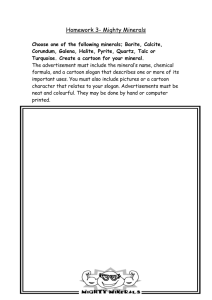

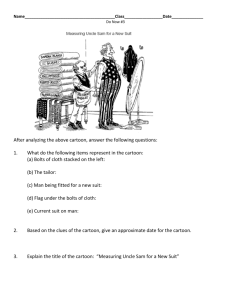
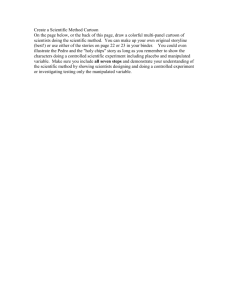
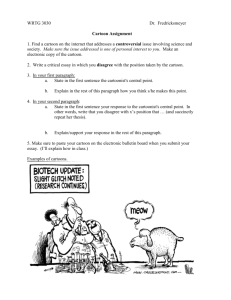

![Phrasal Verbs in Cartoons[2]](http://s2.studylib.net/store/data/005310718_1-897d1a57ddfabbe64c60ba43d0222e3b-300x300.png)
